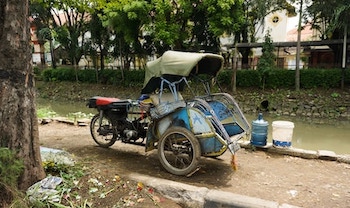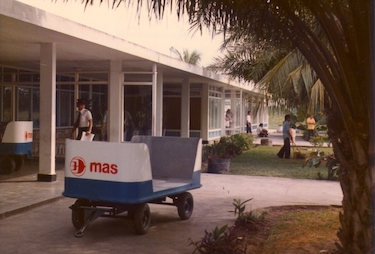President Eisenhower is noted for establishing the Interstate Highway System. He’s also noted for something else that’s probably more important to the country than interstate highways — the establishment of the CRITICOMM System. Here’s a little background in case you don’t know what the CRITICOMM System is….
On October 4, 1957, Russia launched Sputnik, the first man-made satellite to orbit the Earth. The launch was a complete surprise to the intelligence community, including NSA. President Eisenhower didn’t learn about the launch until 24 hours after it occurred. To say he was a little annoyed would be an understatement. The intelligence community had come up short several times under Eisenhower, notably the attack by Israel of Egypt in the Sinai in response to Egypt’s nationalizing of the Suez Canal and Russia’s seizure of Budapest to crush the Hungarian revolution. The Director of NSA issued an alert of the seizure of Budapest, but it didn’t leave the building for seven hours. Again, the President found out about these events well after the fact.
President Eisenhower responded to these failures by establishing several committees to reform the intelligence community. His objective was to see that he had warning of impending crises — not learn of them after they occurred.
One of the reform committees that Eisenhower established was the Critical Communications Committee. The committee defined “critical information” as that information “indicating a situation or pertaining to a situation which affects the security or interests of the United States to such an extent that it may require the immediate attention of the President and other members of the National Security Council.” The committee also recommended that critical information should get to the President within ten minutes of the recognition that it met “Critic” criteria as defined above. President Eisenhower accepted this recommendation in August of 1958 and National Security Council Intelligence Directive (NSCID) 7 was promulgated.
The problem with the committee’s recommendation was that no communication system existed that could meet the ten-minute deadline.
A study published in 1953, concluded that NSA’s handling time on the most critical information was not less than five or six hours from the time of intercept. NSA told the President that 90 percent of the expected warnings would come from Communications Intelligence (COMINT) so NSA was put in charge of creating the new notification system. NSA’s plan called for the establishment of communications relay centers where messages could be routed faster due to the fact that messages would never have to be re-encrypted to be passed along. One big problem with this plan was the various military services were required to fund the relay centers located near their intercept sites. The services usually chose to use their funding for things other than the relays.
In 1958 when NSA was put in charge of building a CRITICOM system — by 1961 — they did not have an automated relay switch that would satisfy the requirements and the relay centers didn’t exist.
Luckily, two technical achievements came along in time to allow NSA to meet its goal. The two devices were the KW-26 and the shunt box. [These are both good subjects for future blogs — I had a fair amount of experience with both devices.] The KW-26 was an on-line encryption device that speeded up transmissions because it could encrypt communications transmissions in real time. The shunt box was developed by the Teletype Corporation — it was a device that could recognize a unique combination of letters and route messages automatically through the relay centers all the way to Washington. If critical information was being sent, nothing else could travel on those circuits. All the relay centers got built — probably because of the Presidential mandate. The system became operational in 1961 and NSA met its timeline goal.
So next time you’re driving down the interstate highway, thank President Eisenhower, but also remember that because of him, every president since 1961 has been warned of impending crises or potential crisis situations in a timely manner….
— 30 —


